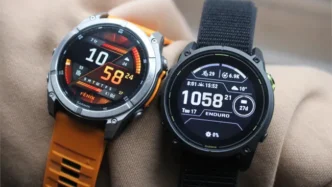In a move no one saw coming, DeepSeek quietly unleashed its latest powerhouse model—DeepSeek-V3-0324. Weighing in at 700GB, this open-source release dropped without fanfare on Hugging Face. No press releases. No hype. Just pure capability—and it didn’t take long for developers to notice.
Early tests are already painting a clear picture: DeepSeek V3 outperforms GPT-4o, OpenAI’s Sonnet 3.5, and even competes with Claude 3.7 in coding and math tasks. And the kicker? It runs smoothly on a Mac Studio, cranking out 20 tokens per second locally. No cloud compute necessary.
But what’s blowing minds isn’t just the performance. It’s what DeepSeek can build—from scratch.
From Prompt to Fully-Functional Website—In Minutes
Developers wasted no time putting DeepSeek V3 through its paces. One user, @el.cine, fired off a simple prompt on X:
“You are a Website Developer. Code a modern small digital marketing landing page.”
The result? A polished, responsive website complete with HTML, CSS, and JavaScript—production-ready in under five minutes. No messy code. No half-baked prototype. Just a clean, professional site ready for deployment.
We ran the same test—and the results were just as impressive. DeepSeek generated everything needed for a live website, all from one prompt. No coding required. Just pure vibe coding.
DeepSeek Is Quietly Dismantling the AI Coding Tool Market
For months, DeepSeek has been lurking in the background, steadily outperforming major players like Meta, OpenAI, and Anthropic in key benchmarks. But with V3-0324, it’s clear where their sights are set—the AI-powered coding space.
That’s bad news for platforms like Cursor, Loveable, and Windsurf, which built their businesses around AI-assisted development. These tools made coding accessible by turning natural language into software. DeepSeek is now doing the same—only faster, cheaper, and fully open-source.
And it’s not just about writing code. DeepSeek understands intent. It interprets prompts and delivers complete digital products—landing pages, dashboards, apps—almost like a human developer who gets your vision.
Vibe Coding: The Future, Now Owned by DeepSeek
The buzzword here is vibe coding—describing a workflow where you sketch an idea in plain language and the AI fills in the technical gaps. No debugging. No syntax errors. Just working software.
DeepSeek’s models are built for this. They don’t simply generate lines of code—they deliver functioning, interactive outputs. And the quality? Developers on X can’t stop raving about the clean UI, lightning-fast generation, and usable results.
While platforms like OpenAI charge upwards of $200 a month for access to premium models, DeepSeek is out here offering near-identical performance at no cost—or minimal if you’re running locally. Their training costs? Just $5.6 million—a fraction of what competitors burn through.
Is This a Death Knell for Cursor, Loveable, and Windsurf?
It’s hard not to see where this is headed. Subscription-based AI coding tools are suddenly looking vulnerable. Take Cursor, for example—it charges $20 a month for access to its Composer and agent tools powered by OpenAI and Anthropic. But savvy users are already plugging DeepSeek into Cursor through extensions like Cline, bypassing that fee entirely.
Loveable and Windsurf face the same pressure. Both shine in rapid prototyping and polished UIs, but if DeepSeek can deliver production-level outputs in two prompts, how long before users jump ship?
As one developer on X put it:
“Bolt raised $105M, but DeepSeek just built the same app for free in two prompts.”
And Windsurf? Its $10/month Cascade agent might start looking expensive next to a model that runs locally through VS Code or Ollama—without the subscription.
Why DeepSeek’s Rise Should Terrify the Big Players
The stakes here are bigger than just vibe coding startups. DeepSeek is sending a warning shot to giants like OpenAI, Anthropic, and Google. These companies rely on costly infrastructure and premium subscriptions to protect their market share. DeepSeek’s open-source approach, optimized architecture, and multi-token predictions make it faster, cheaper, and scalable without massive hardware.
Performance benchmarks tell the story. DeepSeek’s earlier R1 model already beat OpenAI’s o1 on MATH-500 and SWE-bench. The market noticed. Earlier this year, when DeepSeek’s app topped the App Store, fears of compute demand collapsing triggered a $600 billion loss in Nvidia’s market cap—overnight.
Accusations of model distillation from OpenAI aside, developers are voting with their keyboards—and the momentum is shifting.
What’s Next? Adapt or Get Displaced
The bottom line? Tools like Cursor, Bolt, and Windsurf must pivot fast. Either they double down on unique user experiences or move aggressively into enterprise offerings. Because right now, the value they provide is shrinking compared to what DeepSeek offers—free and open.
Meanwhile, the DeepSeek community is growing fast. Developers are building plugins, wrappers, and entire workflows around the model. That snowball effect will only widen the gap.
For indie devs and startups, this means faster product cycles and lower costs. For enterprises, it raises serious questions about continuing to pay premium fees for models DeepSeek is rapidly matching—or exceeding.
As one developer summed it up:
“DeepSeek didn’t just release a model. They dropped a reasoning engine that feels on par with OpenAI’s o1… and it’s open-source. Things are about to move fast.”













